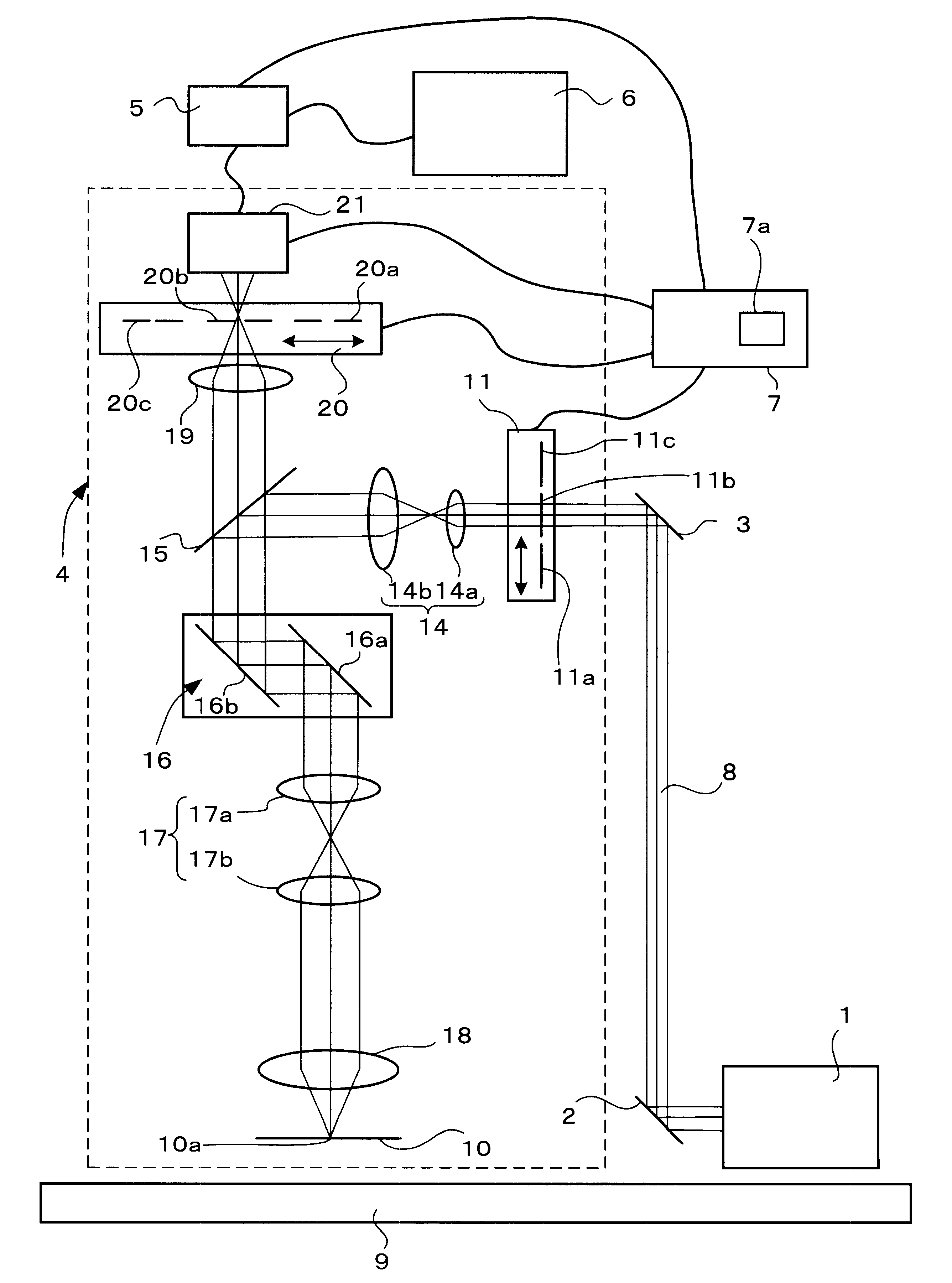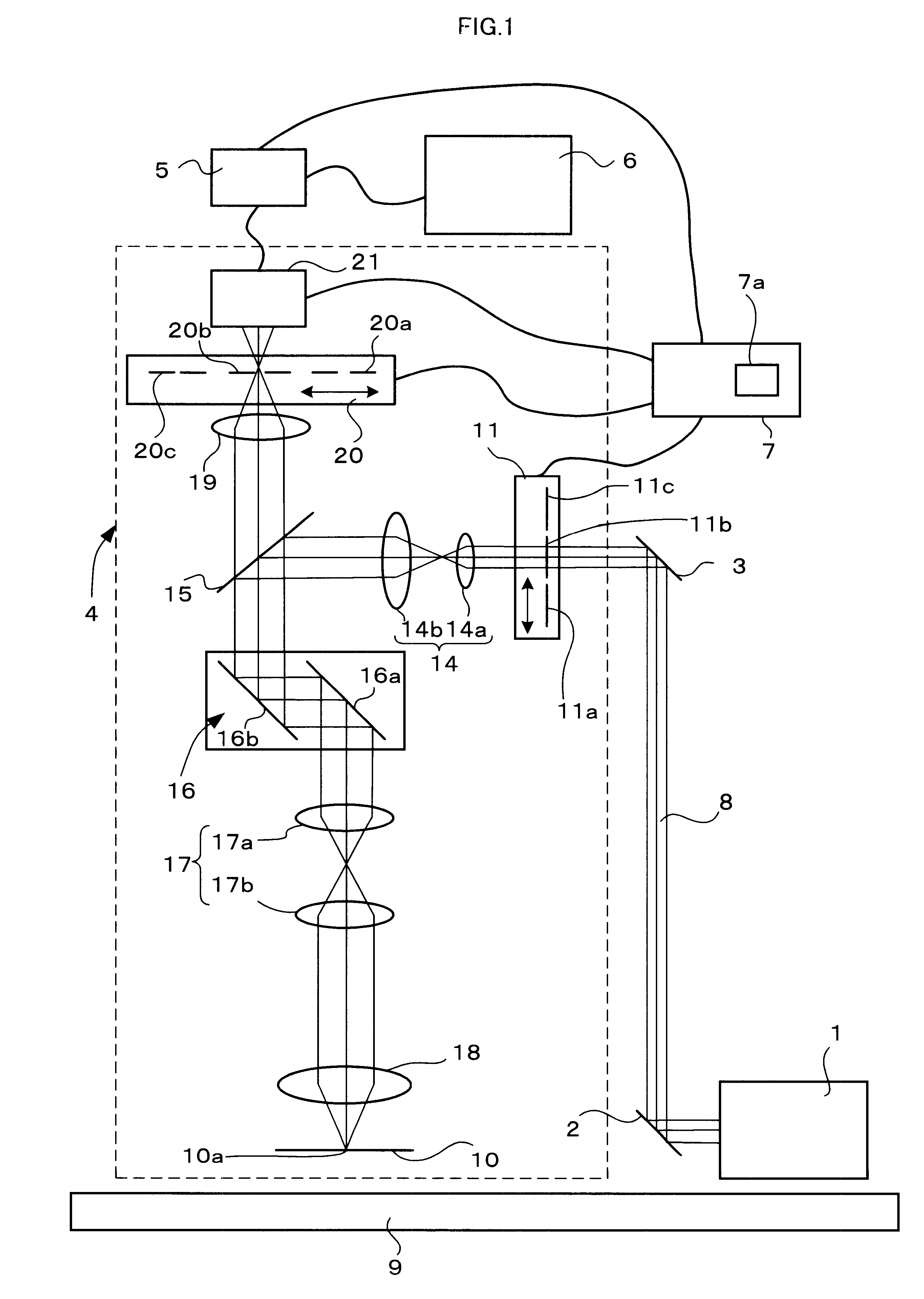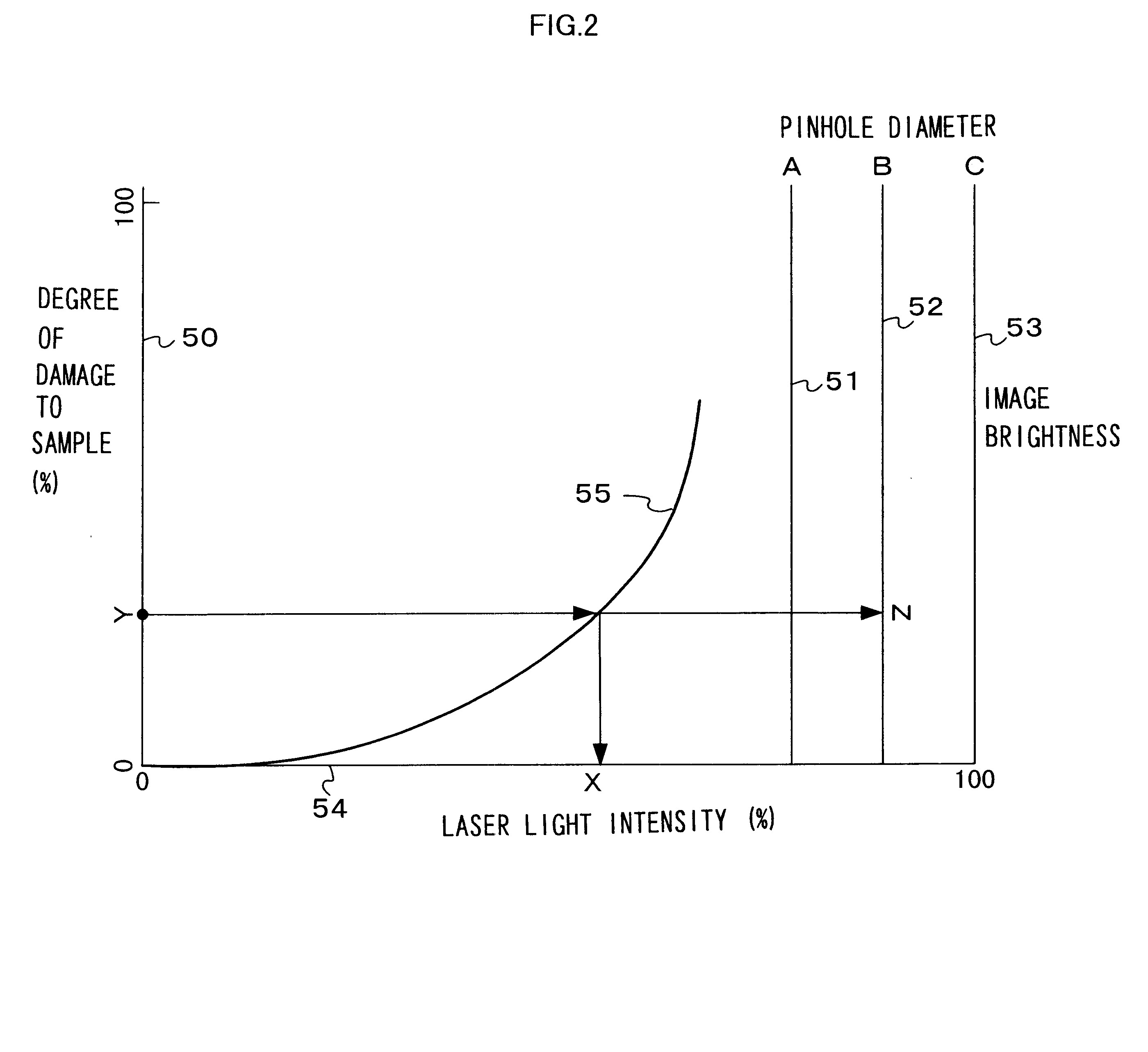Laser microscope and confocal laser scanning microscope
a laser scanning microscope and laser microscope technology, applied in the field of laser microscope and confocal laser scanning microscope, can solve the problems of shortening the integrated circuit, compromising the ease of use, and operating wavelength
- Summary
- Abstract
- Description
- Claims
- Application Information
AI Technical Summary
Problems solved by technology
Method used
Image
Examples
first embodiment
FIG. 1 is a block diagram of the confocal laser scanning microscope in the present invention and FIG. 2 presents a map indicating the relationships among the degree of damage to the sample, the intensity of the laser light, the pinhole size and the brightness of the image.
The confocal laser scanning microscope comprises a laser light oscillation device 1, i.e., a light source, a reflector 2, a reflector 3, a microscope main unit 4, an image processing device 5, a display 6, a computer 7 and a vibration damping stage 9.
The laser light oscillation device 1 emits laser light in the deep ultraviolet range.
The microscope main unit 4 includes a light-reducing filter switching unit 11, a beam expander 14, a beam splitter 15, a two-dimensional scanner unit 16, a relay lens 17, a first objective lens 18, a first condenser lens 19, a pinhole switching unit 20 and a photomultiplier (photomultiplier tube) 21.
The light-reducing filter switching unit 11 is provided with a plurality of light-reduc...
second embodiment
Moreover, while an explanation is given above in reference to the second embodiment on an example in which the optical fiber 102 is employed as a means for guiding the laser light 8 from the laser light oscillator device 1 to the microscope main unit 104, an optical fiber bundle may be used instead for this purpose.
PUM
 Login to View More
Login to View More Abstract
Description
Claims
Application Information
 Login to View More
Login to View More - R&D
- Intellectual Property
- Life Sciences
- Materials
- Tech Scout
- Unparalleled Data Quality
- Higher Quality Content
- 60% Fewer Hallucinations
Browse by: Latest US Patents, China's latest patents, Technical Efficacy Thesaurus, Application Domain, Technology Topic, Popular Technical Reports.
© 2025 PatSnap. All rights reserved.Legal|Privacy policy|Modern Slavery Act Transparency Statement|Sitemap|About US| Contact US: help@patsnap.com



